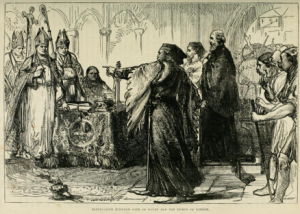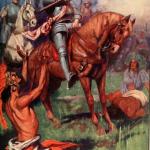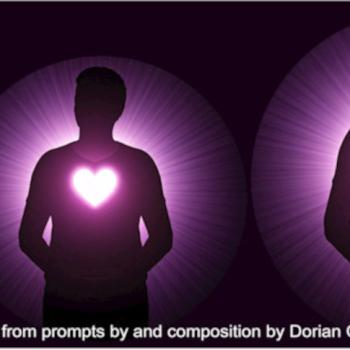Working with new generations (Gen Z) – Series
This series looks at change within the church, and the need for future change to address the spiritual needs of people age 15 to 30. It rejects the notion that the church doesn’t change. Various eras are described. My labels on eras aren’t meant as formal categories.

Image by Patrick Gray on Flickr
The era of conscience and reformation, and the beginning of hate
Around 1455 the printing press began to make Bibles widely available. The Protestant Reformation, building on the work of John Wycliff by such people as Martin Luther, and later John Wesley, was an attempt to bring Christianity back to its founding principles and get rid of the corruption in the church.
Martin Luther, a German teacher and a monk, presented 95 ideas about Christianity that were in conflict with the Catholic Church. Chief among these ideas was rejection of the “indulgence system” in which people would buy or earn forgiveness, and rejection of the church being in an intermediary position between man and God for forgiveness, which was similar to the system of Jewish priests at the time of Jesus. The Protestant Reformation.
Throughout the Middle Ages (1100 to 1453), religious doctrine was minimal and pagan types of belief in things like magic incantations, and belief in the “Wee People” in Ireland, were common. The Reformation helped get the church back to its founding principles.
These practices, such as astrology and Voodoo, are common to this day in various places around the world. Umberto Eco’s novel, Foucault’s Pendulum, dives deeply into these many beliefs from around the world that still exist today.
The Reformation began in the 1500s, and hundreds of years of feuding and wars followed. Even in the 20th Century there has been animosity between Protestants and Catholics, and even today the two groups are distrustful of each other. Catholic–Protestant relations.
Church of England
The Church of England began as a rebellion by Henry VIII against the authority of the Pope (who wouldn’t let him annul his marriage). The King made himself “divine.” Similarly today people have tried to say that the President and other leaders are elected by God similar to the way the ancient kings of Israel were appointed.
Puritans
The Puritan movement, strongly associated with Calvinism (John Calvin) intended to reform the Church of England toward a more Protestant view. “The Puritans moreover wanted all the sins, rituals, and superstitions that “smacked of Roman Catholic idolatry” thoroughly abolished from the realm and from the churches, including; the mass, the surplice, kneeling at the Lord’s Supper, vestments, graven images, profane and sexually immoral stage plays, and the widespread profanation of the Sabbath.”
Puritans came to the New World (America) to escape suppression of their religious practices and escape the perceived sexual promiscuousness present in England.
History of the Puritans under Elizabeth I.
They placed common welfare ahead of self-interest and set modest caps on profit.
Calvinism
Calvinism created a stringent and narrower focus. Churches that came from Calvinism include the Primitive Baptist or Reformed Baptist, Presbyterian Churches, Reformed Churches, the United Church of Christ, the Protestant Reformed Churches in America. They believe in the “total depravity” of humanity, in the equal authority of both Old and New Testaments, the true interpretation of which is assured by the internal testimony of the Holy Spirit. No purely Calvinist Church denominations exist today (maybe one), and churches like the United Church of Christ have changed dramatically.
Calvinism Reconsidered
Many have given considerable thought to the teachings of Calvinism. These teachings are probably more objectionable to Generation Z than any others. Rethinking Calvinism.
The age of Elizabethan Puritanism led to sexual repression with its many problems seen in the late 19th Century and early 20th. The 1960s sexual revolution marked the beginning of the end of the Elizabethan Puritan era as a national influence.
Catholicism
The Catholic Church later underwent its own reformation. Then over time Protestantism fractured into several different denominations.
Church doctrine
Today churches are founded on doctrine. Each church denomination has its own set of mandatory beliefs.
Take Home Points
The eras covered by this part of the series on change in the church shows that the church became corrupt. It wasn’t guided by doctrines so strange practices grew such as the “indulgence system” in which people would buy or earn forgiveness and the church became the intermediary between man and God for forgiveness, which led to these corrupt practices.
People began to realize that these practices weren’t at all Biblical. Reformers noted over 95 false practices of the Roman Catholic Church and began the Protestant Reformation. This led to endless strife between Catholics and Protestants, and wars. The Church of England left Roman Catholicism over the authority of the Pope.
The Puritans objected to the Church of England and the sexual immorality they saw, leading to an age of sexual repression and a host of problems.
The history of Judaism and Christianity is a history of change, sometimes dramatic change. The thought that one of today’s Christian beliefs is the only right belief is a very strange idea.
Series Links
Church Eras and Chang – Part 2
The organized church – Change Part3
New Era of Change – Part 7 – LGBTQIA++
New Era of Change – Part 8 – LGBTQIA++
New Era of Change – Part 8b – LGBTQIA++
Law and Love – New Era of Change – Part 9 – LGBTQIA++
Deconstruction – New Era of Change – Part 10 – LGBTQIA+
Apostle Paul on LGBTQ – – New Era of Change – Part 11
Paul and same sex activity – New Era of Change, Part 12 – LGBTQ Final
New Era of Change – Conscience and Reassessment
Additional Resources
New Generations Walk with Jesus: The missions in a changing world (by author on Amazon). Young adults not only don’t find what they need in churches, they’re pushed away, and they have a no tolerance policy for the nonsense they see in churches. How do you minister to them? Answers.
Promiscuous America: Smart, Secular, and Somewhat Less Happy. Institute For Family Studies.
How Casual Sex Can Affect Our Mental Health. Psychology Today
https://christianstudies.wordpress.com/2011/05/14/230/
Free Speech – Rabbi Berel Wein.
Judaism and the Gays: Part 1 – Dealing with Mishcav Zachar. Oral Torah.
Sexual Morality? Is it the same today as in 1200 BCE?
Some series references:
How to Keep Millennials Engaged in Church – on Patheos
What Is Meant by Truth? – on Patheos
Tabernacle of Hate – False Religion – on Patheos
10 Reforms Christianity Needs to Make Right Now – on Patheos
________________________
The standard of belief and conduct for Christianity is love. Legal standard.
________________________
If you find these articles intriguing, please consider joining the mailing list.
___________________
Our answer is God. God’s answer is us. Together we make the world better.
– Dorian














